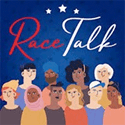 Buying radio is easy. You establish a cost per point and see which stations will meet it. Then, you buy those stations. You get the points you want for the budget you want. SIMPLE. By Charlie Sislen
Buying radio is easy. You establish a cost per point and see which stations will meet it. Then, you buy those stations. You get the points you want for the budget you want. SIMPLE. By Charlie Sislen
Research
Not All Rating Points are Created Equal
Tracking Job Losses for Mothers of School-Age Children During a Health Crisis
 Around 10 million U.S. mothers living with their own school-age children were not actively working in January — 1.4 million more than during the same month last year, according to new U.S. Census Bureau data.
Around 10 million U.S. mothers living with their own school-age children were not actively working in January — 1.4 million more than during the same month last year, according to new U.S. Census Bureau data.
Nielsen launches Inclusion Analytics to accelerate Diversity Transformation in Hollywood
 New demographic insights across TV program talent and viewers will empower the entertainment industry to create more inclusive content
New demographic insights across TV program talent and viewers will empower the entertainment industry to create more inclusive content
Could Gen Z Be Key to Coming Together and Setting Higher Standards for Brands?
 The U.S. is rich in complicated history and diversity. While we may contend with a divisive society, Gen Z, could be key to bringing us together and elevating brand standards at the same time. As the first multicultural majority generation, Gen Zers under 18 are fueling culture plus interpreting and reinventing the American theme—and that is having an impact on Main Street and on Wall Street. By: Nancy Tellet, CMC Research Chair, Culture Marketing Council: The Voice of Hispanic Council
The U.S. is rich in complicated history and diversity. While we may contend with a divisive society, Gen Z, could be key to bringing us together and elevating brand standards at the same time. As the first multicultural majority generation, Gen Zers under 18 are fueling culture plus interpreting and reinventing the American theme—and that is having an impact on Main Street and on Wall Street. By: Nancy Tellet, CMC Research Chair, Culture Marketing Council: The Voice of Hispanic Council
The Podcast Audience is Growing, But Advertiser Focus Should be Sharpening [REPORT]
 Given consumers’ budding on-demand lifestyles, it’s not surprising that podcasts have become the darlings of the audio realm—for consumers, content creators, and now, advertisers. This is good news for everyone, but as the podcast landscape broadens, content creators and advertisers will be increasingly tasked with ensuring that their programs and messages align with who’s listening. And when we look at audience trends, creators and advertisers should be focused on where the growth i
Given consumers’ budding on-demand lifestyles, it’s not surprising that podcasts have become the darlings of the audio realm—for consumers, content creators, and now, advertisers. This is good news for everyone, but as the podcast landscape broadens, content creators and advertisers will be increasingly tasked with ensuring that their programs and messages align with who’s listening. And when we look at audience trends, creators and advertisers should be focused on where the growth i
A Brand Manager’s Guide to Effective Multicultural Marketing
![]() Consumers are paying more attention than ever to how companies navigate social and racial justice issues and reward brands that align with their values. Getting it right, though, can be a daunting task, even for experienced brand managers. By Roy Eduardo Kokoyachuk- ThinkNow
Consumers are paying more attention than ever to how companies navigate social and racial justice issues and reward brands that align with their values. Getting it right, though, can be a daunting task, even for experienced brand managers. By Roy Eduardo Kokoyachuk- ThinkNow
NBCUniversal rolls out “Impression-Based” local ad buys
![]() NBCUniversal announced that its 42 NBC/Telemundo stations and seven regional sports networks are officially moving to 100 percent impressions-based buying for all local advertising campaigns as of April 1, 2021.
NBCUniversal announced that its 42 NBC/Telemundo stations and seven regional sports networks are officially moving to 100 percent impressions-based buying for all local advertising campaigns as of April 1, 2021.
Brands Need Cultural Fluency to Survive & Thrive
 Today’s multicultural teens and parents ages 25-49 have little tolerance for being disrespected by brands. According to a recent study by the Cultural Marketing Council: The Voice of Hispanic Marketing (CMC), more than half of people ages 13 to 49 have quit a culturally illiterate brand, saying it offended them or disrespected their values—that number skyrockets to 72 percent among Black female parents ages 25 to 49. Thirty percent of teens and adults who have already quit a brand also said advertising adjacent to offending content was the reason for a brand break-up. By Nancy Tellet, CMC Research Chair, Culture Marketing Council: The Voice of Hispanic Council
Today’s multicultural teens and parents ages 25-49 have little tolerance for being disrespected by brands. According to a recent study by the Cultural Marketing Council: The Voice of Hispanic Marketing (CMC), more than half of people ages 13 to 49 have quit a culturally illiterate brand, saying it offended them or disrespected their values—that number skyrockets to 72 percent among Black female parents ages 25 to 49. Thirty percent of teens and adults who have already quit a brand also said advertising adjacent to offending content was the reason for a brand break-up. By Nancy Tellet, CMC Research Chair, Culture Marketing Council: The Voice of Hispanic Council
4 Ways Modern Marketers are Using Attribution to Drive More ROI
 Marketers have entered an age of uncertainty, facing more roadblocks to measurement than ever before. The media landscape is becoming increasingly complex, with the explosion of different channels and data sources posing measurement challenges.
Marketers have entered an age of uncertainty, facing more roadblocks to measurement than ever before. The media landscape is becoming increasingly complex, with the explosion of different channels and data sources posing measurement challenges.
CULTURAL COMFORT, SILOES AND STRESS IMPACTS GEN Z TRUST CIRCLES
 According to a study by the Culture Marketing Council: The Voice of Hispanic Marketing (CMC), despite a multicultural majority among the under-18 age segment, most non-Hispanic white (NHW) teens do not experience the MC majority reality in their daily lives—from their schools and neighborhoods to their friendships online and in real life. Regardless of race or background, teen stress levels are high, trust circles are tight and vary among kids and parents, depending on culture, age, and experience with organizations and institutions.
According to a study by the Culture Marketing Council: The Voice of Hispanic Marketing (CMC), despite a multicultural majority among the under-18 age segment, most non-Hispanic white (NHW) teens do not experience the MC majority reality in their daily lives—from their schools and neighborhoods to their friendships online and in real life. Regardless of race or background, teen stress levels are high, trust circles are tight and vary among kids and parents, depending on culture, age, and experience with organizations and institutions.
Unemployed Americans are feeling the emotional strain of job loss; most have considered changing occupations
 The unemployment rate has come down significantly since last spring, falling to 6.3% in January 2021. But labor market disruption remains a hallmark of the COVID-19 recession.
The unemployment rate has come down significantly since last spring, falling to 6.3% in January 2021. But labor market disruption remains a hallmark of the COVID-19 recession.
Multicultural Boomer Habits
![]() One of the most important generations in American history — baby boomers — is tired. That’s according to the first installment of an extensive research study conducted by the integrated cross-cultural marketing agency Sensis.
One of the most important generations in American history — baby boomers — is tired. That’s according to the first installment of an extensive research study conducted by the integrated cross-cultural marketing agency Sensis.
The New Black Family Culture: Navigating Crises Through Content [REPORT]
 For a culture often defined by coming together, such as through family meals, worship services and visits to the barbershop or salon, 2020 presented Black families with shared and unique obstacles, especially families with kids. As a result, many Black families found new ways to engage with content celebrating Black culture and about Black identity in America.
For a culture often defined by coming together, such as through family meals, worship services and visits to the barbershop or salon, 2020 presented Black families with shared and unique obstacles, especially families with kids. As a result, many Black families found new ways to engage with content celebrating Black culture and about Black identity in America.
2020 Demographic Analysis Estimates [WEBINAR]
 The 2020 Demographic Analysis estimates include national-level estimates of the population by age, sex, race and Hispanic origin as of April 1, 2020.
The 2020 Demographic Analysis estimates include national-level estimates of the population by age, sex, race and Hispanic origin as of April 1, 2020.
How purchase decisions are made
 It is my attempt to summarize as clearly and simply as possible the process by which people choose between brands based on their intuitive and deliberative thinking. I would love to hear your thoughts about it, good, bad, or indifferent. By Nigel Hollis
It is my attempt to summarize as clearly and simply as possible the process by which people choose between brands based on their intuitive and deliberative thinking. I would love to hear your thoughts about it, good, bad, or indifferent. By Nigel Hollis
Measuring News Consumption in a Digital Era [REPORT]
 The news media’s transition to digital has brought major upheaval to the industry – including a multitude of new providers and ways to get to news. And just as American news organizations have had to drastically reevaluate their business models, it would make sense that researchers who are trying to measure the U.S. public’s news consumption also need to reexamine the traditional ways they have done so.
The news media’s transition to digital has brought major upheaval to the industry – including a multitude of new providers and ways to get to news. And just as American news organizations have had to drastically reevaluate their business models, it would make sense that researchers who are trying to measure the U.S. public’s news consumption also need to reexamine the traditional ways they have done so.
Univision signs on to Project OAR to advance Addressable TV Standards For Spanish-Language Audiences And Advertisers
 Univision will serve as a member of the primary Steering Committee dedicated to creating a standard by which all parties in the TV ecosystem can collaborate and unite on addressable advertising.
Univision will serve as a member of the primary Steering Committee dedicated to creating a standard by which all parties in the TV ecosystem can collaborate and unite on addressable advertising.
ThinkNow Pulse Report 2021 [REPORT]
![]() In this report, we examine consumer sentiment across key demographics in the U.S. The findings are especially relevant this year as marketers scramble to get a pulse on the post-pandemic consumer.
In this report, we examine consumer sentiment across key demographics in the U.S. The findings are especially relevant this year as marketers scramble to get a pulse on the post-pandemic consumer.
Data Privacy Day: 2021 Data Privacy Trends
 According to KPMG’s Corporate Data Responsibility survey, 97% of American consumers indicated that data privacy is important to them, yet 68% don’t trust companies to ethically sell personal data. And COVID-19 has only made consumers more aware of data privacy issues—making it even more imperative that companies act responsibly.
According to KPMG’s Corporate Data Responsibility survey, 97% of American consumers indicated that data privacy is important to them, yet 68% don’t trust companies to ethically sell personal data. And COVID-19 has only made consumers more aware of data privacy issues—making it even more imperative that companies act responsibly.
Race, Ethnicity and Marketing in 2021 [PODCAST]
 It was less than two weeks after the storming of the U.S. Capitol and the night before President Joe Biden’s inauguration. I spoke with Mario X. Carrasco, Co-Founder and Principal of ThinkNow, an award-winning, technology driven cultural insights agency. The plan was to talk about multicultural marketing. We did. But we talked about a whole lot more.
It was less than two weeks after the storming of the U.S. Capitol and the night before President Joe Biden’s inauguration. I spoke with Mario X. Carrasco, Co-Founder and Principal of ThinkNow, an award-winning, technology driven cultural insights agency. The plan was to talk about multicultural marketing. We did. But we talked about a whole lot more.



























